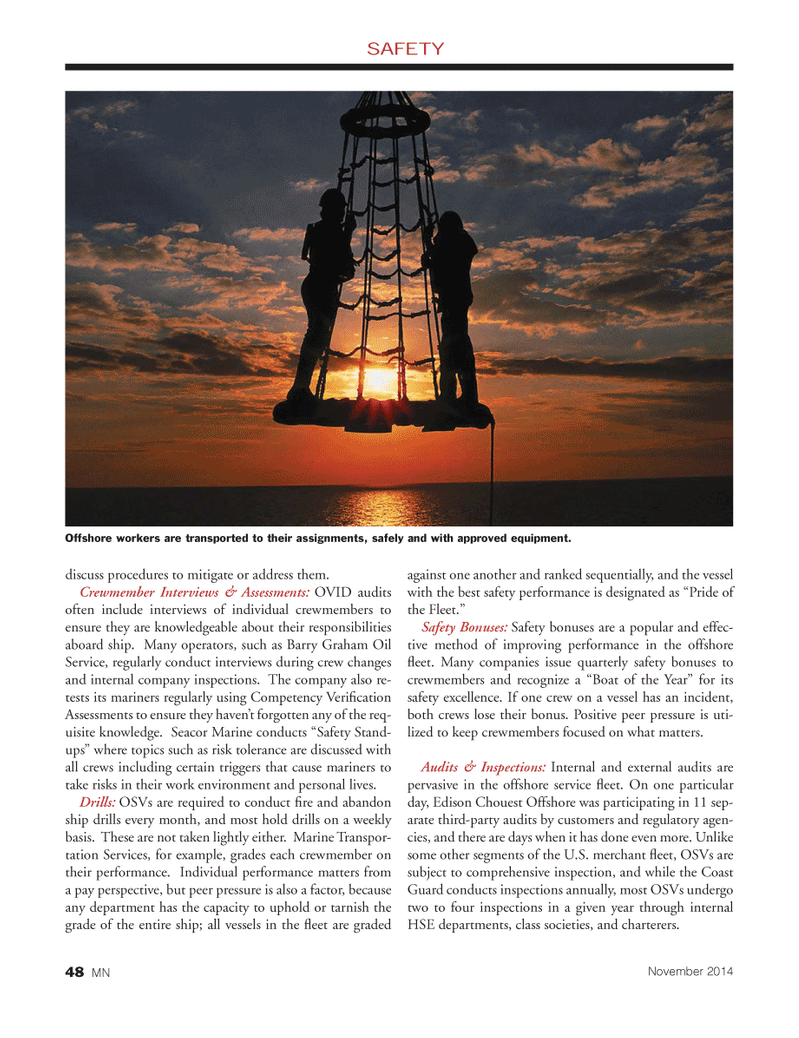
Page 48: of Marine News Magazine (November 2014)
Workboat Annual
Read this page in Pdf, Flash or Html5 edition of November 2014 Marine News Magazine
SAFETY discuss procedures to mitigate or address them.
Crewmember Interviews & Assessments: OVID audits often include interviews of individual crewmembers to ensure they are knowledgeable about their responsibilities aboard ship. Many operators, such as Barry Graham Oil
Service, regularly conduct interviews during crew changes and internal company inspections. The company also re- tests its mariners regularly using Competency Verifi cation
Assessments to ensure they haven’t forgotten any of the req- uisite knowledge. Seacor Marine conducts “Safety Stand- ups” where topics such as risk tolerance are discussed with all crews including certain triggers that cause mariners to take risks in their work environment and personal lives.
Drills: OSVs are required to conduct fi re and abandon ship drills every month, and most hold drills on a weekly basis. These are not taken lightly either. Marine Transpor- tation Services, for example, grades each crewmember on their performance. Individual performance matters from a pay perspective, but peer pressure is also a factor, because any department has the capacity to uphold or tarnish the grade of the entire ship; all vessels in the fl eet are graded against one another and ranked sequentially, and the vessel with the best safety performance is designated as “Pride of the Fleet.”
Safety Bonuses: Safety bonuses are a popular and effec- tive method of improving performance in the offshore fl eet. Many companies issue quarterly safety bonuses to crewmembers and recognize a “Boat of the Year” for its safety excellence. If one crew on a vessel has an incident, both crews lose their bonus. Positive peer pressure is uti- lized to keep crewmembers focused on what matters.
Audits & Inspections: Internal and external audits are pervasive in the offshore service fl eet. On one particular day, Edison Chouest Offshore was participating in 11 sep- arate third-party audits by customers and regulatory agen- cies, and there are days when it has done even more. Unlike some other segments of the U.S. merchant fl eet, OSVs are subject to comprehensive inspection, and while the Coast
Guard conducts inspections annually, most OSVs undergo two to four inspections in a given year through internal
HSE departments, class societies, and charterers.
Offshore workers are transported to their assignments, safely and with approved equipment. 48 MN
November 2014
MN Nov14 Layout 32-49.indd 48 10/23/2014 10:28:28 AM

 47
47

 49
49
